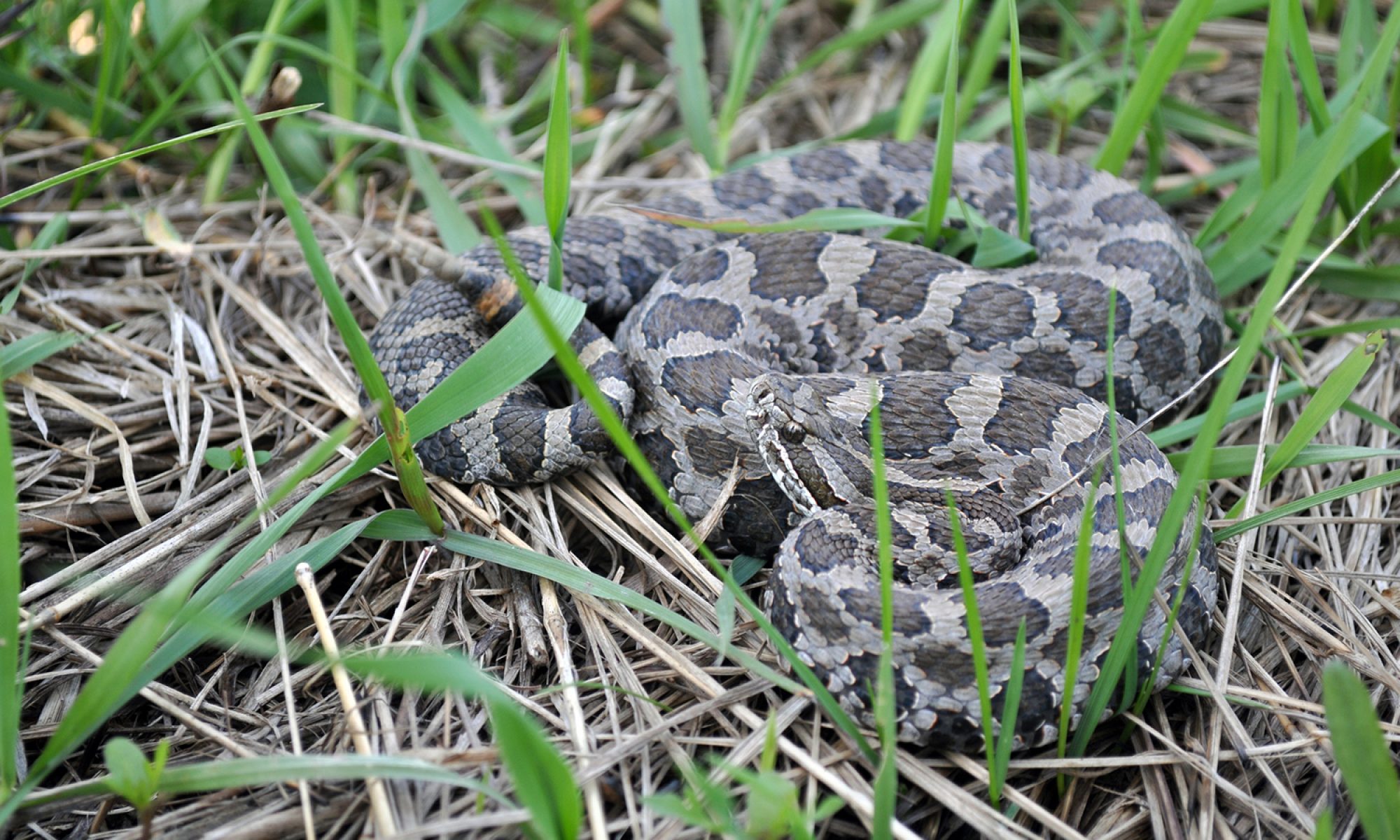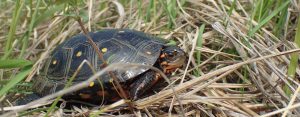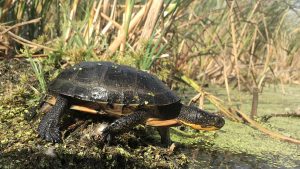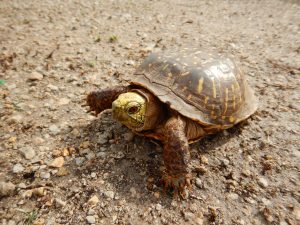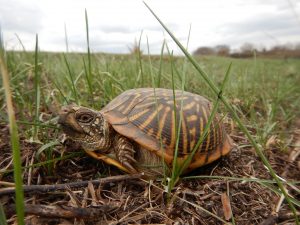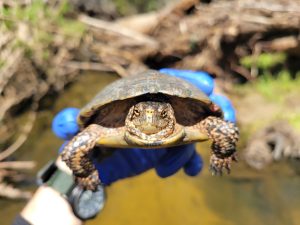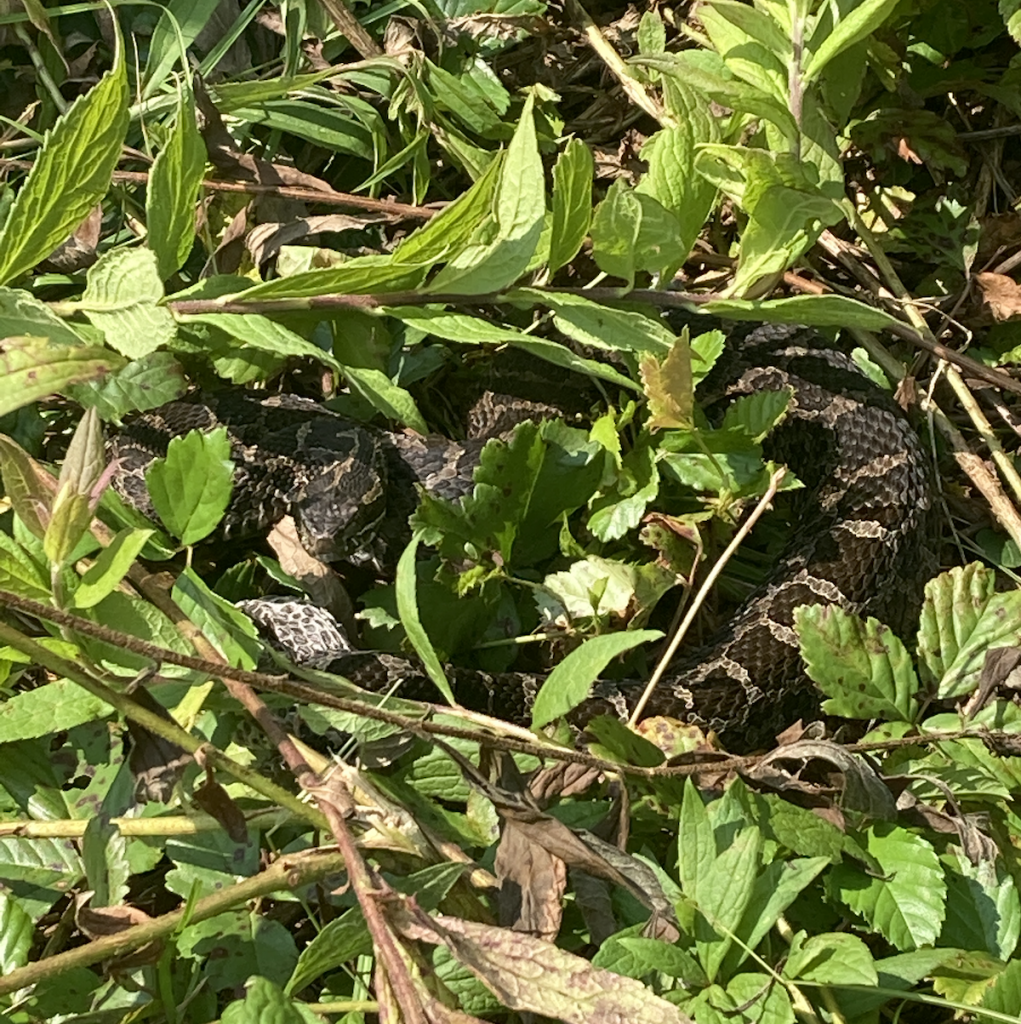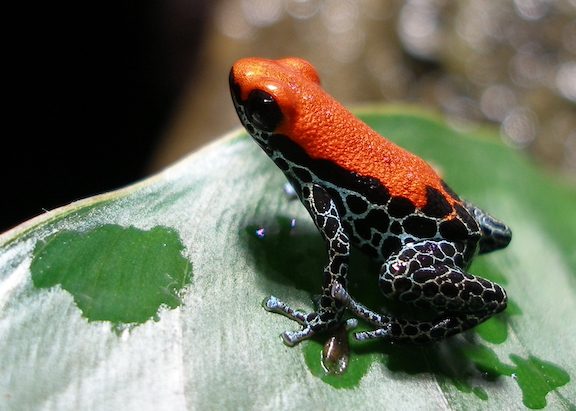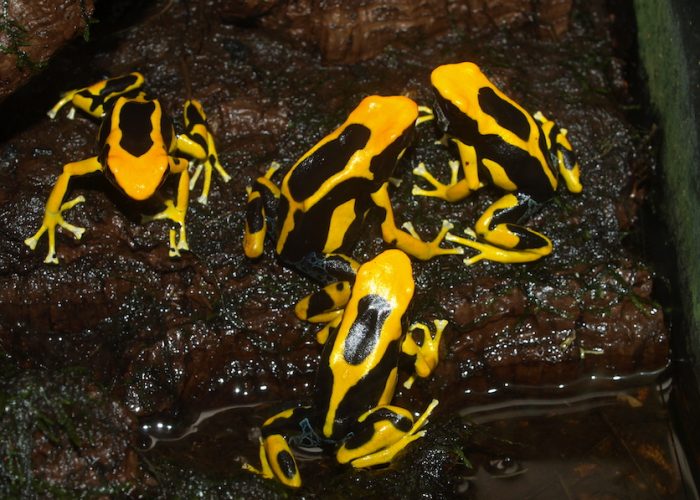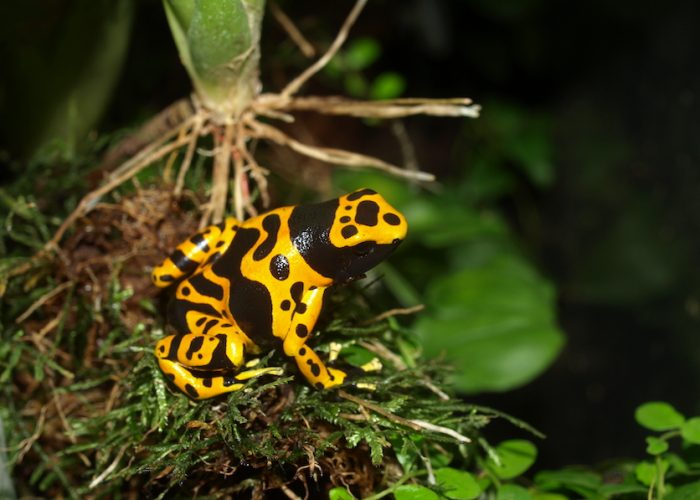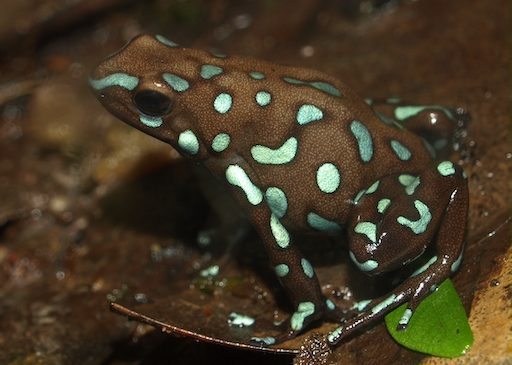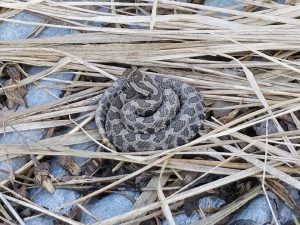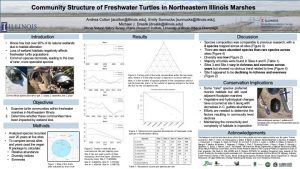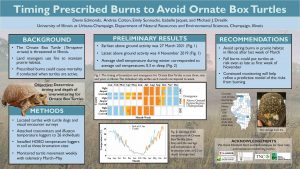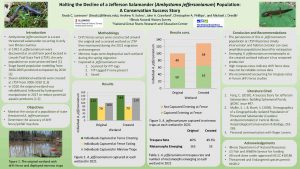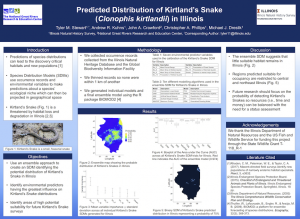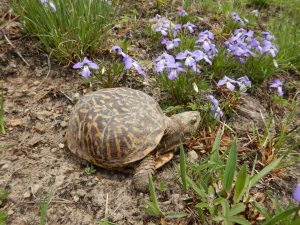Dr. Dreslik and graduate students Blaine Hiner and Zander Perelman attended and presented at the 2023 Joint Meeting of Ichthyologists and Herpetologists in Norfolk VA, July 12-16.
The Continued Decline of the Eastern Massasauga in Illinois, from Distribution to Population Scales
Michael Dreslik, Tyler Stewart, Tom Beauvais, John Crawford
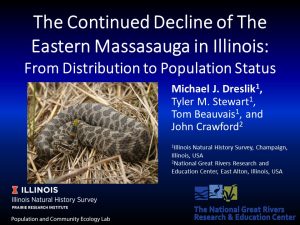 Marked changes have occurred to the earth’s biomes through the
Marked changes have occurred to the earth’s biomes through the
Anthropocene due to human activity altering landscape-level processes. Many species reliant on ecosystems that have been heavily impacted have suffered massive range contractions and population declines. Given most prairies have been converted for agricultural purposes, species occupying those systems have exhibited precipitous declines. Here we examined the decline of Eastern Massasauga in Illinois using approaches at different scales, including g historical and contemporary distributions using Species Distribution Models and element-of-occurrence records to specific population trends using demographic monitoring. Unfortunately, the prognosis for the continued presence of the species on Illinois’ landscape is not promising.
Relating Habitat Parameters to Population Abundances in the Eastern Massasauga
Michael Dreslik, Sarah Baker, John Crawford, Andrew Stites, Ethan Kessler
 Before conservation measures can be taken, three questions about a species must be addressed: 1) where are they distributed; 2) what habitats do they use; and 3) how many do we have on the landscape? Habitat suitability index
Before conservation measures can be taken, three questions about a species must be addressed: 1) where are they distributed; 2) what habitats do they use; and 3) how many do we have on the landscape? Habitat suitability index
(HSI) models are primarily used to predict habitat quality on the landscape for a given species, but they also provide a method to answer the second question with the supposition that the higher the suitability, the greater the abundance. The link between suitability and abundance estimations is often not made, even though both are critical for measuring conservation success. Here we examined several habitat parameters to determine their efficacy at predicting population abundances of the Eastern Massasauga at their southern range limit in Illinois. Specifically, we tested whether parameters in an existing HSI model provided range-wide applicability or if proximate point- based or remote-sensed lidar-based measures of vegetation cover were better predictors.
Extrinsic Factors Influencing Hibernacula Occupancy of the Eastern Massasauga
Blaine Hiner, Michael Dreslik
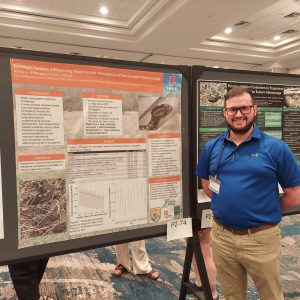 Determining a species’ habitat use and distribution across a landscape
Determining a species’ habitat use and distribution across a landscape
is essential for understanding the prevalence of declines due to larger-scale threats. At the landscape level, anthropogenic threats such as climate change and habitat destruction have triggered global population declines; thus, specific data crucial to combat declines must assess their impacts.
Collecting landscape-level data has been improved by the advent of occupancy modeling, which can elucidate the impacts anthropogenic factors have on population presence. The Eastern Massasauga is particularly vulnerable to extreme natural events from climate change and habitat loss in the western third of its range, particularly due to its reliance on specific overwintering habitats, which have been largely converted to agriculture. Extrinsic factors affecting overwintering habitat occupancy could include the burning regime, flooding events, aberrant seasonal climate, patch size, and juxtaposition of patches across the landscape. Using a long-term capture-mark-recapture dataset (1999 – present), we determined if extrinsic management and climate factors affected hibernacula occupancy rates. Our results would afford prioritization of site-specific habitat management actions to mitigate factors negatively impacting site occupancy.
Male-male Combat in Free-ranging Sistrurus Rattlesnakes
Zander Perelman, Terence Farrell
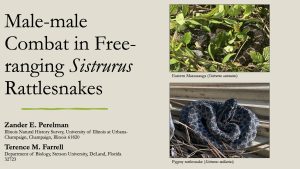 Although male-male combat is documented in numerous snake species, reports of combat behaviors are seldom more detailed than simple descriptions. Combat between snakes in the genus Sistrurus is rarely observed and only one previous account, focused on captive specimens, offered behavioral descriptions and analyses. Here, we discuss combat events between free-ranging Eastern Massasaugas (S. catenatus) in Pennsylvania, and free-ranging Pygmy Rattlesnakes (S. miliarius) in Florida. We used video recordings to describe and quantify observed combat behaviors. Additional behavioral contexts, specifically observed copulation (S. catenatus) and active defeat (S. miliarius), allowed for quantified behaviors to be analyzed and compared with knowledge of the winning male in both combat events. Quantifying and analyzing these two events has provided insight into important behavioral determinants of combat success in Sistrurus rattlesnakes. Observation of snake combat is opportunistic, and consequently, detailed behavioral descriptions and analyses as performed here are rare in natural settings. Such social behaviors have clear implications for reproductive success and fitness, and comprehensive analyses of combat behavior, as accomplished here, may prove useful in understanding the evolution of these reproductive behaviors.
Although male-male combat is documented in numerous snake species, reports of combat behaviors are seldom more detailed than simple descriptions. Combat between snakes in the genus Sistrurus is rarely observed and only one previous account, focused on captive specimens, offered behavioral descriptions and analyses. Here, we discuss combat events between free-ranging Eastern Massasaugas (S. catenatus) in Pennsylvania, and free-ranging Pygmy Rattlesnakes (S. miliarius) in Florida. We used video recordings to describe and quantify observed combat behaviors. Additional behavioral contexts, specifically observed copulation (S. catenatus) and active defeat (S. miliarius), allowed for quantified behaviors to be analyzed and compared with knowledge of the winning male in both combat events. Quantifying and analyzing these two events has provided insight into important behavioral determinants of combat success in Sistrurus rattlesnakes. Observation of snake combat is opportunistic, and consequently, detailed behavioral descriptions and analyses as performed here are rare in natural settings. Such social behaviors have clear implications for reproductive success and fitness, and comprehensive analyses of combat behavior, as accomplished here, may prove useful in understanding the evolution of these reproductive behaviors.
